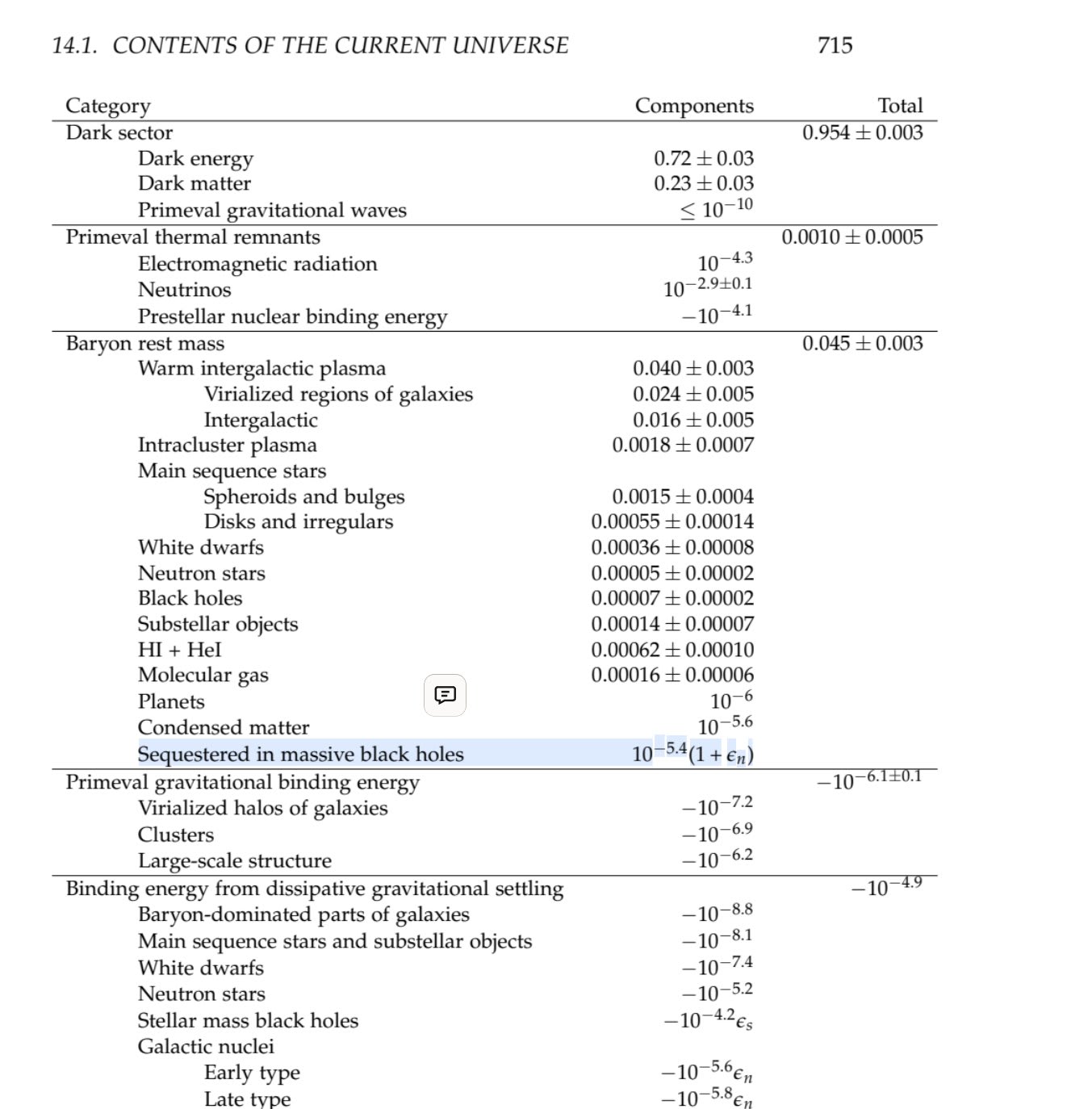Published on October 9, 2025 11:35 PM GMT
Notes on some interesting factoids I learnt from Anders Sandberg's draft book, Grand Futures.
"Starlight is heavier than worlds" - Anders Sandberg

Looking at the energy density of stuff in the universe, we find a few surprising, and not so surprising, facts. First, the obvious: baryonic matter itself is a rounding error, contributing 4.5% of the energy of the universe. Nine tenths of those sweet, sweet baryonic numéraire are stuck in the warm plasma floating between galaxies. About half the remainder forms the stuff of stars.
Planets don't even match a thousand of the contribution of stars to the energy density of the universe. Somewhat surprisingly, supermassive black holes have a contribution. Regardless, the fact remains that planets are a rounding error to a rounding error to a rounding error of the energy of dark matter and energy. Even starlight contains more energy. So in a literal sense, starlight is heavier than worlds.

So, I hope that emphasizes just how important it is to figure out if we can make use of all that dark matter/energy. Or even that intergalactic plasma! From that perspective, stars are really only useful as a bootstrapping step to capture the real resources. Good thing too, given that even slow star-lifting can be done in Mega Years.
But there's an obvious problem: you can't really interact with it. Dark matter only interacts gravitationally, and gravity is weak. So very weak that in spite of huge great clouds of the stuff just lying around in clouds about galaxies, we can see the great devouring supermassive black holes at their heart haven't even managed a nibble.
But yeah, black holes: that's one way to make use of dark matter. Not via accelerating them in accretion discs till they break apart and bleed off great deluges of energy, like with ordinary matter. Instead, through black hole radiation. That's right, we chuck the matter in and weight till strange eons past for black holes to die.
The efficiency of this is not bad. You can get half of the energy you dump in back out. A fifth of that is light, a half is electrons/positrons and the other fifth is heavier particles. Which, again, is more than that of all baryonic matter and radiation combined. The rest is neutrinos, which are also very hard to capture.
Of course, there's the minor issue that you can't make the black holes much heavier than 1011 kg or else they'll mostly release light very light particles i.e. few baryons. Can't make much with those. (Turing completeness, let alone error correction, has not been shown for leptonic matter on its own.)
On the plus side, that reduces the time it takes for the blackhole to evaporate. A 1011 black hole takes 109 years to evaporate. A one solar mass black hole takes 1067 years. Here's the black hole evaporation time formula, in case you're wondering:
Tevaporation=5120πG2M3ℏc4≈(MMsun)3×2.140×1067 years
OK, so that's converting dark matter taken care of. What about collecting it? The obvious idea is just to chuck some black holes at this. The only idea I've got, really.
Except there's one little issue: it can't suck enough. Remember, we want teeny-weeny black-holes. 1011 kg, remember? That means a radius of 10−16 m. You'd need an extremely dense mesh of blackholes to get anywhere. But that causes a bunch of problems, one of which is the pain in the butt of making sure they don't crash into one another and merge.
The other big issue is that black holes experience drag. Crazy, right? You'd think they'd just suck up everything in their way. But no, some stuff gets slingshotted away by gravity, sapping momentum from the blackhole. So somehow, you've got to co-ordinate countless bodies which destroy anything they touch, cannot be allowed to hit intersect, and you have to somehow use them to scoop up all the dark matter in the universe.

How very cursed.
So, as far as I'm aware, we don't have a good solution to the problem of collecting dark matter, and we may have a small-scale, limited, slow solution to the problem of turning a lump of dark matter into useful stuff. So super-heated plasma floating through the inter-galactic void for dinner, anyone?
Acknowledgement: Everything I know about this subject comes from Ander's excellent book. And many thanks to my Grand Futures reading group for stimulating discussions on the topic.
Discuss

